Dominique Luchart's Blog, page 565
July 17, 2021
The space tourism industry is stuck in its billionaire phase, Joey Roulette

 Photo by PATRICK T. FALLON/AFP via Getty Images
Photo by PATRICK T. FALLON/AFP via Getty ImagesRichard Branson’s extravagant jaunt to space on Sunday signaled the dawning of a new space age — for the few people that can afford it. Jeff Bezos is about to set off on a similar excursion next Tuesday when he launches to space with three others on his company Blue Origin’s first crewed flight. The two billionaires are validating their companies’ tourist-tailored rockets and, they say, fulfilling lifelong dreams to get a brief taste of space.
But what Virgin Galactic’s mission on Sunday proved, and what Bezos’ flight will similarly show, is that space is almost open, not for you and me or the general public, but for more billionaires.
Opening up the cosmos to the masses and normalizing space travel is a goal companies and their billionaire backers have been targeting for years but haven’t yet achieved. There’s economic potential beyond launching rich people to space: microgravity research for scientists and — a much farther goal — rapid transportation between continents. That’s the vision they’re selling with these flashy flights; once exclusive to government astronauts, traveling in space could be a thing for everyone else too.
“That’s the dream, right? That space isn’t just for NASA anymore,” Kathy Lueders, NASA’s human spaceflight chief who oversaw development of SpaceX’s Crew Dragon astronaut capsule, said during a press conference in April. “I mean, I think that’s what we’re trying to do… what we were hoping is that you would hopefully have so many customers that at one point, the price-point would go down to having it be accessible. It’s tough at the beginning.”
In this beginning phase, flying to space is priced only for the ultra-rich, driven by the high costs of new space technology. Virgin Galactic’s launch of Richard Branson represented one of the final key test missions to validate its shiny six-seated spaceplane, SpaceShipTwo, but it was also a meticulously crafted marketing event, complete with flashy promo videos, inspirational speeches, and a pop concert, all designed to help attract more attention, and more customers.
 Guests of Virgin Galactic at Spaceport America watch as Richard Branson’s SpaceShipTwo spaceplane takes off under its carrier planePhoto by PATRICK T. FALLON/AFP via Getty Images
Guests of Virgin Galactic at Spaceport America watch as Richard Branson’s SpaceShipTwo spaceplane takes off under its carrier planePhoto by PATRICK T. FALLON/AFP via Getty ImagesTo live their own version of Branson’s dream, customers will have to pay at least $250,000 for a seat (the company already has roughly 600 booked passengers). And right now, the quarter-million-dollar price tag is the cheapest option on the market. The price for a seat on Blue Origin’s New Shepard rocket could be higher. And if you want to go into orbit for a few days, a ride on SpaceX’s Crew Dragon capsule will set you back at least $55 million (that could be higher too; SpaceX hasn’t publicly confirmed the real price).
While Branson and Bezos’ flights to space mark key moments for their space tourism businesses, the space industry is far from being able to offer its services to the rest of the public. To get there, they’ll have to clear several hurdles: Can these rockets reliably fly humans on multiple missions without a hitch? If there is a hitch, like a fatal accident, can the market survive a damaged reputation? And can someone buy a ticket to space just as they can book an expensive flight (instead of just the ultra-rich)?
Then there’s the court of public opinion, which may be difficult to win over. Bezos, Branson and Elon Musk’s space ambitions have been criticized as another example of billionaires spending money on passion projects when there are places and causes where those funds could arguably be put to better use. The US alone struggles with vast wealth inequities, poor access to healthcare and a rapidly changing climate, among other problems that, when paired with space tourism, makes the activity look insultingly selfish to many. Sen. Bernie Sanders (I-VT), a leading critic of billionaires, has repeated that point as the private space race heats up. “Here on Earth, in the richest country on the planet, half our people live paycheck to paycheck, people are struggling to feed themselves, struggling to see a doctor — but hey, the richest guys in the world are off in outer space!,” he tweeted in March.
Here on Earth, in the richest country on the planet, half our people live paycheck to paycheck, people are struggling to feed themselves, struggling to see a doctor — but hey, the richest guys in the world are off in outer space!
Yes. It’s time to tax the billionaires.
— Bernie Sanders (@BernieSanders)
“I can understand it,” Branson says of critiques like Sen. Sanders’, speaking on The Late Show with Stephen Colbert on July 14th. “But I think maybe they’re not fully educated as to what space does for Earth.” Branson, like other space advocates, point to the technologies that investments in space have helped propel into the mainstream, like the GPS capabilities wired into smartphones, weather tracking services or climate change research and modeling from satellites in low-Earth orbit. Many of those investments came from public funds — it’s still unclear what spin-off developments might emerge from the still-fledgling private space tourism industry.
As long as the space industry is dependent on billionaire funds for spacecraft built for billionaire (and millionaire) customers, the perception that this is a hobby for the ultrawealthy will inevitably remain. “We have to deal with the fact that billionaires trying to make more money are the public face of the space sector right now,” Brian Weeden, a director at the Secure World Foundation, said.
 Elon Musk celebrates in NASA’s Vehicle Assembly Building after SpaceX launched its first crew of astronauts to spacePhoto by Joe Raedle/Getty Images
Elon Musk celebrates in NASA’s Vehicle Assembly Building after SpaceX launched its first crew of astronauts to spacePhoto by Joe Raedle/Getty ImagesPutting faces on nascent industries isn’t unusual in itself. Charles Lindbergh, the first pilot to fly across the Atlantic Ocean alone, famously helped propel commercial aviation from its infancy in the 1920s and 1930s. Same with Steve Jobs or Bill Gates at the dawn of the desktop computer at the end of the 20th century.
Those industries, too, had doubters and critics. The US was skeptical of the early planes being built by the Wright brothers and top military officials dismissed aviation as a fad. “Any man who sticks to it is either crazy or else a plain damned fool,” said American Admiral William A. Moffett, who would later embrace aviation under the Navy’s Bureau of Aeronautics. And in 1943, when computers were massive room-sized objects, the chairman of IBM, Thomas Watson, scoffed at their potential: “I think there is a world market for maybe five computers.”
Flights became commonplace. Computers became less expensive and more widely used. And at each phase of the computer’s evolution, people found new ways to use them as they became accessible to more markets and a wider swath of consumers, notes Carissa Christensen, CEO of BryceTech, a tech and space industry analytics firm.
 Jeff Bezos introduces Blue Origin’s New Shepard system in 2017
Jeff Bezos introduces Blue Origin’s New Shepard system in 2017“There’s going to be a fairly large learning curve as companies go from the process of developing a capability and testing it, to operating it routinely,” Christensen said. It’s possible that space tourism will follow the same path as computers or airplanes, but there’s no guarantee that it will succeed. In part, that’s because there’s no single solution to driving down the cost of launching people to space. Virgin Galactic earlier this year unveiled a new version of SpaceShipTwo that’s tailored for quick production rates, signaling it’s gearing up to accommodate its hefty customer backlog and reopen ticket sales, which have been closed since a fatal 2014 accident during a test flight. (Branson’s presence on Sunday’s flight also served as a visual reassurance to customers that the ship is safe.) Musk is focusing on better rocket fuel efficiency with SpaceX’s Starship, a fully reusable launch system being developed to slash the cost of sending humans to space.
But again, what exactly those next-generation prices will be remain a mystery. Musk hasn’t said how much it’ll cost prospective passengers to fly on Starship. And Virgin Galactic hasn’t said how much it plans to charge for tickets for its newer spaceplane, SpaceShipThree, just like Blue Origin, which hasn’t revealed its New Shepard prices.
Currently, you either have to be talented (hand-picked by a billionaire) or lucky to book a ride on one of these rockets without paying the steep price tag. Raffling off tickets, like Virgin Galactic plans to do, and donating seats to space enthusiasts who can’t afford them keeps the public dream of normalized, low-cost space travel alive while the industry races to find the right recipe for bringing prices down. “I think that in any competitive market you’re going to see products improve and/or prices drop,” Christensen added.
The competition has only just begun, and other companies are angling to get into space tourism. Texas-based Axiom Space has plans to build a private space station and arrange private rides on SpaceX’s Crew Dragon capsules. A new rocket under development by Rocket Lab, the California-based launch company that plans to go public, is designed to launch humans to space in the future. Boeing’s Starliner capsule is designed to ferry private astronauts to the space station, too.
At the moment, there’s no telling which one will make it — if any of them do. For now, space tourism is still in a phase controlled by billionaire cash. Whether or not the industry can grow out of the spectacle and into something more mature will depend less on Bezos or Branson fulfilling their childhood dreams of flying to space and more on bringing down the cost of building rockets — and the price we pay to fly on them.
The post The space tourism industry is stuck in its billionaire phase, Joey Roulette appeared first on NEWDAWN Blog.
On This Day in Space! July 17, 1962: X-15 breaks altitude record, ,
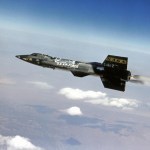
On July 17, 1962, the American test pilot Bob White broke the world record for the highest altitude flight.
He took off from Edwards Air Force Base in a rocket-powered X-15 aircraft and made it to an altitude of 314,750 feet. That’s almost 60 miles!
At the time, the Air Force considered the edge of space to be 50 miles above the Earth. So White received astronaut wings for his record-breaking spaceflight.
Image 1 of 6[image error]
The X-15 rocket plane flew 199 times between 1959 and 1968. (Image credit: NASA/U.S. Air Force)Image 2 of 6[image error]
The X-15 rocket-powered aircraft begins its climb after launch at the NASA Dryden Flight Research Center, California. Image (Image credit: NASA/Dryden)Image 3 of 6[image error]
A photo from 1966 of the flight crew for the X-15 which was developed to provide data on aerodynamics, structures, flight controls and the physiological aspects of high speed, high altitude flight. (Image credit: NASA.)Image 4 of 6[image error]
Dryden pilot Neil Armstrong is seen here next to the X-15 ship #1 (56-6670) after a research flight. (Image credit: NASA)Image 5 of 6[image error]
NASA research pilot William Bill Dana is seen standing next to the X-15 rocket-powered aircraft after a flight in 1967. Dana died on May 6, 2014 at the age of 83. (Image credit: NASA)Image 6 of 6[image error]
The North American X-15A-2 rocket plane (front) and the Lockheed Martin Titan IVB rocket (rear) on display in the new space gallery at the National Museum of the U.S. Air Force in Dayton, Ohio. (Image credit: U.S. Air Force/Ken LaRock)Catch up on our entire “On This Day In Space” series on YouTube with this playlist.
[image error]
History of NASA: $22.99 at Magazines Direct
Discover the story of how and why NASA was created, its greatest triumphs, darkest days, and of the times it exceeded all possible hopes. A tale of adventure, heroism and resourcefulness, learn of the space agency’s greatest achievements and how — over six decades — the organization has consistently and tirelessly devoted itself to its founding principle: that “activities in space should be devoted to peaceful purposes for the benefit of all humankind”. View Deal
Still not enough space? Don’t forget to check out our Space Image of the Day, and on the weekends our Best Space Photos and Top Space News Stories of the week.
Email Hanneke Weitering at hweitering@space.com or follow her @hannekescience. Follow us @Spacedotcom and on Facebook.
Join our Space Forums to keep talking space on the latest missions, night sky and more! And if you have a news tip, correction or comment, let us know at: community@space.com.
The post On This Day in Space! July 17, 1962: X-15 breaks altitude record, , appeared first on NEWDAWN Blog.
Curiosity rover discovers that evidence of past life on Mars may have been erased, ,
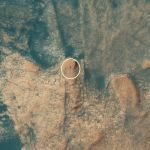
Evidence of ancient life may have been scrubbed from parts of Mars, a new NASA study has found.
The space agency’s Curiosity rover made the surprising discovery while investigating clay-rich sedimentary rocks around its landing site in Gale Crater, a former lake that was made when an asteroid struck the Red Planet roughly 3.6 billion years ago.
Clay is a good signpost towards evidence of life because it’s usually created when rocky minerals weather away and rot after contact with water — a key ingredient for life. It is also an excellent material for storing microbial fossils.
Related: Here’s what NASA’s Opportunity rover saw before ‘lights out’
But when Curiosity took two samples of ancient mudstone, a sedimentary rock containing clay, from patches of the dried-out lake bed, dated to the same time and place (3.5 billion years ago and just 400m apart), researchers found that one patch contained only half the expected amount of clay minerals. Instead, that patch held a greater quantity of iron oxides, the compounds that give Mars its rusty hue.
The team believes the culprit behind this geological disappearing act is brine: supersalty water that leaked into the mineral-rich clay layers and destabilized them, flushing them away and wiping patches of both the geological — and possibly even the biological — record clean.
“We used to think that once these layers of clay minerals formed at the bottom of the lake in Gale Crater, they stayed that way, preserving the moment in time they formed for billions of years,” study lead author Tom Bristow, a researcher at NASA’s Ames Research Center in Mountain View, California, said in a statement. “But later brines broke down these clay minerals in some places — essentially resetting the rock record.”
The rover completed its analysis by drilling into the layers of the Martian rock before using its chemistry and mineralogy instrument, known as CheMin, to investigate the samples.
The process of chemical transformation in sediments is called diagenesis, and it could have created new life beneath Mars even as it erased some of the evidence of the old life on its surface, according to the study authors. So even though old records of life may have been erased in the brine patches, the chemical conditions brought about by the influx of salty water may have enabled more life to spring up in its place, the scientists said.
“These are excellent places to look for evidence of ancient life and gauge habitability,” study co-author John Grotzinger, a geology professor at the California Institute of Technology, said in the statement. “Even though diagenesis may erase the signs of life in the original lake, it creates the chemical gradients necessary to support subsurface life, so we are really excited to have discovered this.”
Curiosity’s mission to Mars began nine years ago, but the rover has continued to study the Red Planet well past its initial two-year mission timeline, to establish the historic habitability of Mars for life. It is now working in collaboration with the new Perseverance Mars rover, which landed in February 2021 and has been tasked with collecting rock and soil samples for a possible return to Earth.
RELATED CONTENT
—The 10 strangest places where life is found on Earth
—The 7 most Mars-like places on Earth
—9 strange excuses for why we haven’t met aliens yet
The research done by Curiosity has not only revealed how the Martian climate changed but also helped Perseverance determine which soil samples to collect to increase the odds of finding life.
“We’ve learned something very important: There are some parts of the Martian rock record that aren’t so good at preserving evidence of the planet’s past and possible life,” co-author Ashwin Vasavada, a Curiosity project scientist at NASA’s Jet Propulsion Laboratory in California, said in the statement. “The fortunate thing is, we find both close together in Gale Crater and can use mineralogy to tell which is which.”
The search for life on Mars has been given fresh animus by a new study that could have triangulated the possible location of the six methane emissions detected by the Curiosity rover during its time in Gale crater, Live Science reported. Since all of the methane in Earth’s atmosphere comes from biological sources, scientists are thrilled to find the gas on Mars.
The researchers published their findings July 9 in the journal Science.
Originally published on Live Science.
The post Curiosity rover discovers that evidence of past life on Mars may have been erased, , appeared first on NEWDAWN Blog.
What are the chances that Jeff Bezos won’t survive his flight on New Shepard?, ,
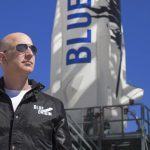
Jeff Bezos should feel mildly confident that he’s not going to be blown to smithereens during his upcoming jaunt to space. Though riskier than many other things the world’s wealthiest billionaire might do, the first crewed flight of his New Shepard rocket will be about as dangerous as the majority of other spaceflight launches, according to two experts consulted by Live Science.
Bezos, the former CEO of Amazon, will partake in an 11-minute journey along with three other crew members on July 20, an event set to coincide with the 52nd anniversary of the Apollo 11 moon landing, as Live Science previously reported. The New Shepard capsule, which operates autonomously and can hold up to six passengers, will launch from a West Texas launchpad to a height of 62 miles (100 kilometers), often regarded as the boundary of space.
Spaceflight is an inherently risky business. The main factors affecting that risk include the experience level of the launch company, the number of launches a particular vehicle has performed and the type of rocket engine used, Joseph Fragola, the CEO of Asti Group, LLC and an independent systems engineer who has calculated risk for NASA for decades, told Live Science.
Related:
Blue Origin’s launch with Jeff Bezos: Everything you need to know
More:
Top 10 leading causes of death
Blue Origin, Bezos’ spaceflight company, has flown New Shepard 15 times during uncrewed tests, with only one partial failure during which the passenger capsule landed safely but the rocket booster crashed, as Live Science’s sister site Space.com previously reported.
“That’s a tremendously positive thing,” Fragola said, referring to the successful track record.
Adding to Blue Origin’s confidence levels are the fact that New Shepard will take only a short excursion, not enter orbit, and will use a relatively simple single engine, Blake Putney, an electrical engineer who has also worked on risk analysis for NASA vehicles, told Live Science.
New Shepard’s BE-3 (Blue Origin-3) engine generates around 110,000 pounds (50,000 kg) of thrust when it takes off, according to the company. That’s far less than something like NASA’s Space Shuttle boosters, which generated a combined 1.2 million pounds (544,000 kg) of thrust on the launchpad, according to the agency.
Much of the risk in spaceflight depends on “how powerful and how complex your engine is, and how much time does it have to fail,” Putney said. The shuttle engines were complicated beasts that fired for a long time to carry their crews into orbit, meaning that a lot more could go wrong during the ascent.
After the 1986 Challenger disaster, Fragola calculated that the highly-complex fleet of space shuttles should see a failure at around 1 in every 120 launches — a number that turned out to be quite accurate given that the program flew 135 missions over 30 years and suffered two tragedies during that time, according to Space.com. (The Challenger space shuttle disintegrated just 73 seconds into flight, killing all seven crew members aboard.)
Related: How to watch Blue Origin launch Jeff Bezos on July 20
Infographic: How Blue Origin’s New Shepard rocket works
But both experts agreed that the majority of mature launch vehicles — meaning those that have flown several times, allowing their engineering teams to work out the bugs — should have a failure rate of roughly 1 in 1000 flights. While that could be okay for risk-taking astronauts, the average person might balk at such odds.
“Compared to airplanes, it’s ridiculously terrible,” Fragola said. “A U.S. aircraft is now bordering on between 1 in 100 million to 1 in a billion” chance of disaster.
Looking at Blue Origin’s experience so far, Fragola estimated that the odds of something going wrong with the rocket “would be between 1 in 100 and 1 in 500, with a best estimate of 1 in 200.”
Yet because New Shepard’s crew capsule sits far from its engine and has the opportunity to separate and escape in case of catastrophe, he would increase his estimate of the crew’s actual safety. Based on comparable systems, an abort procedure like this tends to have about an 80% success rate, he said, so the chances of Bezos and his fellow passengers not surviving their trip should be around 1 in 1000, or just about the same as any other astronaut on a rocket flight.
To put that in perspective, this is about the same risk the average American has from dying by drowning over their lifetime, according to the National Safety Council.
Putney wasn’t willing to give hard numbers to the success rate, but added that another big risk factor is the parachute system on the passenger vehicle that will be responsible for delivering the crew safely to the ground. “If the winds are blowing hard, and coming crossways, the [capsule] could tumble,” he said.
Given New Shepard’s short flight time, operators will be able to predict the weather with fairly high accuracy, and so Putney said they should have a fairly good handle on when to launch to best ensure the crew’s safety. He imagined that Bezos was probably taking on the same order of risk as Austrian daredevil Felix Baumgartner did during his 2012 record-breaking skydive from an altitude of 120,000 feet (36,576 meters).
RELATED CONTENT
—7 everyday things that happen strangely in space
—Interstellar space travel: 7 futuristic spacecraft to explore the cosmos
—Voyager to Mars Rover: NASA’s 10 greatest innovations
Fragola compared the current era of human spaceflight with 1930s passenger aircraft expeditions. Until the Douglas DC-3 airplane came into service, the airline industry was experiencing failures roughly comparable to today’s best rockets, he said, and yet people still flew on planes.
“I would say we’re entering into the DC-3 era with spacecraft,” he added. “We’re not there yet, but we’re entering into it.”
So, would Fragola himself roll the dice and join Bezos if he could? “Absolutely! Tomorrow,” he said. “You pay for it, and I’ll be there.”
Originally published on Live Science.
Editor’s Note: This story was updated to correct Felix Baumgartner’s nationality. He is Austrian, not Australian.
The post What are the chances that Jeff Bezos won’t survive his flight on New Shepard?, , appeared first on NEWDAWN Blog.
July 16, 2021
WhatsApp tests encrypted cloud backups on Android, Richard Lawler

When you’re using WhatsApp your messages are encrypted end-to-end, which means prying eyes can’t easily see what’s in them as they travel back and forth. However, if you keep a backup stored in the cloud, authorities can use a search warrant to have Google Drive or iCloud hand over access to the data. But WABetaInfo has reported previously that WhatsApp is working on the technology to independently encrypt your backups in the cloud, and says that in the most recent beta update on Android (2.21.15.5), the system has been enabled.
Opting in should keep your chat history and media securely backed up, with the significant caveat that if you forget your passcode / lose the 64-digit recovery key, then they’ll be locked away permanently — even WhatsApp can’t help you get in. If you’re OK with being on your own in that respect, then all you need to do is get in the beta test group or wait for this to be available to everyone.
The Facebook-owned service is also testing a version of the software that works across multiple devices, maintaining end-to-end encryption whether or not you have a phone involved. If you’re in the beta, check your version carefully, as posts on social media suggest the closed encryption tests are expanding to include more people.
@WABetaInfo Yes, Got it… pic.twitter.com/WRVZbCoYlt
— Shabbirahemad (@KShabbirahemad)
The post WhatsApp tests encrypted cloud backups on Android, Richard Lawler appeared first on NEWDAWN Blog.
Satellites over Europe track massive floods in Germany and Belgium, ,

Sobering images from space show the impact of devastating floods in Germany and Belgium that have left more than 100 people dead.
While the rain that caused the floods is expected to ease this weekend, search and rescue efforts remain hampered in the two countries. Officials say that the rising waters are in large part due to global warming, according to the New York Times.
The Copernicus Emergency Management Service, which includes participation from the European Space Agency (ESA), first forecast a “high probability of flooding” on July 9, according to the service’s website. Copernicus has been sending out alerts and forecasts regularly to European emergency authorities to try to stay ahead of the flooding as best as possible.
Related: Smoke from wildfires in Oregon and beyond covers vast areas of US
See more
The forecasts depend on accurate and timely satellite imagery from any available source. One prominent European example is the Sentinel 1 mission, which began in 2014 and includes a pair of polar-orbiting satellites that map Earth using synthetic aperture radar. Radar allows the satellite to peer through clouds, which makes it a useful tool during rainy and flooding conditions.
“Radar data from our Sentinel-1 will be used to map flooded areas to support first responders,” tweeted Thierry Breton, the European Commission’s commissioner for internal market, on Thursday (July 15). “Thoughts with those affected.”
Sentinel-1 has already been tasked to gather more information about the floods over the weekend, the ESA Operations account tweeted on Friday (July 16).
Related: A ‘wobble’ in the moon’s orbit could result in record flooding in the 2030s
See more
Another useful tool for forecasters has been Meteosat 11, one of a series of European weather forecasting satellites allowing a continuous series of data since 1977. Long, consistent satellite datasets are useful for making predictions about global warming and other long-term changes in Earth’s climate. Further, Meteosat-11’s geosynchronous orbit around Earth allows it to image the same zone of our planet consistently, as its orbit approximately matches the Earth’s rotation.
“Imagery from Europe’s #Meteosat11 Satellite shows a large low-pressure system that has been bringing record rainfall and devastating, deadly flooding to Germany and Belgium. Heavy rain also fell across Switzerland, Luxembourg and the Netherlands,” wrote the National Oceanic and Atmospheric Administration (NOAA) Satellites Twitter account on Friday.
Meteosat 11 is operated by EUMETSAT, the European satellite agency that monitors weather, climate and the environment from space. EUMETSAT has been providing regular updates on the flooding through its Twitter account, using a range of satellites and prediction products.
See more
“The slow moving persistent upper-level low that brought the long-lasting intense rainfall which caused the deadly #flooding in Germany & many parts of W[est] Europe this week can be clearly in satellite imagery,” the EUMETSAT Users account tweeted Friday, including an animation of clouds swirling over western Europe.
A third generation of the Meteosat series is under development to “guarantee the continuity of data for weather forecast … over the next two decades,” ESA’s Space Transportation office tweeted Thursday. The new series will include new capabilities including lightning imaging, and atmospheric “sounding” to monitor changes at different altitudes, according to EUMETSAT’s website. The first of the new series is scheduled to launch in late 2022, with two others following in 2024 and 2025.
ESA’s Earth observation Twitter account has also been documenting the flooding, using Copernicus imagery. “This radar image uses information from two separate acquisitions captured by @copernicusEU Sentinel 1 (on 3 July and 15 July 2021) to show the extent of the flooding in red,” the account said on Friday, with a radar image showing water spreading in Germany.
Follow Elizabeth Howell on Twitter @howellspace. Follow us on Twitter @Spacedotcom and on Facebook.
The post Satellites over Europe track massive floods in Germany and Belgium, , appeared first on NEWDAWN Blog.
Amazon just got Fakespot booted off Apple’s iOS App Store, Sean Hollister

Fakespot, known for its web browser extensions that try to weed out fake product reviews, suddenly no longer has an iPhone or iPad app — because Amazon sent Apple a takedown request, both Amazon and Fakespot confirm, and Apple decided to remove the app.
The giant retailer says it was concerned about how a new update to the Fakespot app was “wrapping” its website without permission, and how that could be theoretically exploited to steal Amazon customer data. Fakespot founder Saoud Khalifah told The Verge that Apple abruptly removed the app today without any explanation. Apple confirms it removed the app, but disputes the circumstances.
The new Fakespot app launched just over a month ago, and I can confirm it let you log in to Amazon, browse, and buy items with Fakespot’s overlay on top. I downloaded and tried it a few weeks ago to see if it could help spot fake reviews on some new purchases, but I didn’t come to a conclusion on whether it actually helped.
Thank you to all of our users for making this new iOS app a reality. Together we will put an end to eCommerce fraud. We have more amazing products coming soon that will make secure shopping the gold standard for eCommerce. https://t.co/UyUnsOydzK
— Fakespot (@FakespotTweets)
But in mid-June, says Fakespot’s founder, Amazon initiated a takedown notice. And just hours ago, says Khalifah, Apple finally delivered a blunt three-line email about how it regretted that the situation couldn’t be resolved amicably and that Fakespot has now been removed from the App Store. “We just dedicated months of resources and time and money into this app,” says Khalifah. “Apple hasn’t even given us the ability to solve this.”
Hours after we published this story, Apple told The Verge that’s not exactly true:
“This was a dispute over intellectual property rights initiated by Amazon on June 8 and within hours we ensured both parties were in contact with one another, explaining the issue and steps for the developer to take to keep their app on the store and giving them ample time to resolve the issue. On June 29, we again reached out to Fakespot weeks before removing their app from the App Store.”
Over the phone, Khalifah clarified that Apple did mention on June 29th that it “may be forced to pull” Fakespot from the App Store, but insists Apple never provided any other guidance, and that it was largely just conversation between Amazon and Fakespot where each argued their side before Apple yanked the app. “I’m shocked Apple decided to side with Amazon without any proof,” says Khalifah.
Amazon tells us it believes Fakespot violated Apple guideline 5.2.2, which reads:
5.2.2 Third-Party Sites/Services: If your app uses, accesses, monetizes access to, or displays content from a third-party service, ensure that you are specifically permitted to do so under the service’s terms of use. Authorization must be provided upon request.
Amazon also tells us that Fakespot injects code into its website, opening up an attack vector and putting customer data (including email, addresses, credit card info, and your browser history) at risk, though it says it doesn’t actually know if Fakespot is using this information.
“The app in question provides customers with misleading information about our sellers and their products, harms our sellers’ businesses, and creates potential security risks. We appreciate Apple’s review of this app against its Appstore guidelines,” reads a statement from Amazon.
But while Fakespot admits the app injects code to display its own scores, he categorically denies there’s any vulnerability and points out that apps which include a web browser view are common — including coupon apps that Amazon seems to “have no problem with wrapping around a webview browser.” Amazon did, however, try to warn against browser coupon extension Honey by suggesting it was a security risk last January.
Regardless of why, it’s a blow to one of the major outspoken critics of Amazon’s review system, as Fakespot is regularly cited in reports about review fraud on Amazon. Amazon even bought search ads against the “Fakespot” keyword in the App Store to reduce the app’s potential impact:

“Amazon is willing to bully little companies like ours that showcase the cracks in their company,” Khalifah says, suggesting Amazon must have realized people were choosing their app over the Amazon app. He says Fakespot racked up 150,000 installs from the iOS App Store, without spending any money on marketing.
Amazon says it regularly audits companies that try to call out fake reviews and claims that Fakespot’s ratings are mostly wrong: “We regularly review products where Fakespot rated a product’s reviews as untrustworthy and their findings were wrong more than 80% of the time. They simply do not have the information we have–such as reviewer, seller and product history–to accurately determine the authenticity of a review.” Amazon suggests that it does a much better job of finding fake reviews itself by analyzing 30 million of them each week, though that clearly hasn’t stopped the fake and incentivized review problems yet — something we’re still investigating at The Verge.
Amazon wouldn’t say if it’s contacted Google about the Android version of the app, but that app hasn’t been updated since 2019.
Fakespot’s founder says the company is weighing its legal options now because it believes mobile is the future of shopping. “We’re seeing percentages of 60/40 now hovering in mobile’s favor,” Khalifah tells me.
“We will explore all the options we have available,” says Khalifah.
Update, 8:09PM ET: Added mention of browser coupon extension Honey.
Update, 10:39PM ET: Added Apple statement and Fakespot’s reply.
The post Amazon just got Fakespot booted off Apple’s iOS App Store, Sean Hollister appeared first on NEWDAWN Blog.
Blue Origin’s first human launch with Jeff Bezos: When to watch and what to know, ,
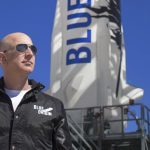
On July 20, Blue Origin will launch its first crewed spaceflight with its New Shepard rocket and capsule, and the flight will carry its billionaire founder: Jeff Bezos.
The mission, which Blue Origin has dubbed the First Human Flight, will be the 16th flight of New Shepard, but the first with astronauts aboard. Bezos and three other civilians will launch from the company’s Launch Site One near Van Horn, Texas at 9 a.m. EDT (1300 GMT), in a milestone mission for the space tourism company.
Here’s everything you need to know about the flight.
Related: How to watch Blue Origin launch Jeff Bezos on July 20
Infographic: How Blue Origin’s New Shepard rocket works
[image error]
Jeff Bezos at the Blue Origin launch pad with a New Shepard rocket in the background. (Image credit: Blue Origin)The launch of New Shepard’s first crewed flight will be broadcast Tuesday (July 20) beginning at 7:30 a.m. EDT (1130 GMT) at BlueOrigin.com and here at Space.com, if possible. Liftoff is expected at 9 a.m. EDT (1300 GMT), but could change depending on weather or technical matters.
A typical New Shepard flight lasts 11 minutes. After the landing, a live broadcast with the astronauts will be available at BlueOrigin.com. The time of that press conference has not been announced, but Blue Origin will stream it live online and Space.com will simulcast it if possible. The company will also be sharing mission updates all day via @BlueOrigin on Twitter.
Blue Origin has not announced if it will have a special host for the webcast similar to rival Virgin Galactic, which recruited comedian and The Late Show host Stephen Colbert for its July 11 launch of billionaire Richard Branson.
Typically, New Shepard flies well above the 62-mile (100 kilometers) Karman line that international authorities recognize as the boundary of space. The rocket will return autonomously to its launch site and land, and the crew capsule will descend beneath a parachute.
Who is Blue Origin launching on New Shepard?Image 1 of 4[image error]
Jeff Bezos and Blue Origin staff celebrate the successful landing of a New Shepard rocket. He will ride one on July 20, 2021. (Image credit: Blue Origin)Image 2 of 4[image error]
Mark Bezos hugs his brother Jeff. The two will launch to space together on a Blue Origin New Shepard on July 20, 2021. (Image credit: Blue Origin)Image 3 of 4[image error]
Oliver Daemon, 18, will be the youngest person in space when he launches on Blue Origin’s New Shepard spacecraft on July 20, 2021. (Image credit: Blue Origin)Image 4 of 4[image error]
Wally Funk, 82, will become the oldest person to fly in space when she launches with Blue Origin on July 20, 2021. (Image credit: Blue Origin)New Shepard’s first crewed flight will carry four passengers, but no pilot as the space capsule is an automated system. The crew will include:
Jeff Bezos, 57, who founded Blue Origin in 2000 and made billions as the founder of Amazon.com
Mark Bezos, 53, the younger brother of Bezos and a millionaire in his own right. He is a former ad executive and is on the leadership council of the non-profit Robin Hood, which fights poverty, according to Business Insider.
Wally Funk, 82, a pioneering female aviator who was one of the famed Mercury 13, women tested by NASA as potential astronauts during the early days of the U.S. space program. Funk will become the oldest person to fly in space with this launch, beating the late Mercury astronaut John Glenn, who was 77 when he flew on his second mission on NASA’s space shuttle Discovery in 1998.
Oliver Daemon, 18, a physics student who plans to study at the University of Utrecht in the Netherlands. Deaemon will be the youngest person in space on this mission, beating Russian cosmonaut Gherman Titov, who was 25 when he flew on the Soviet Union’s Vostok 2 mission in 1962. Daemon is a late addition to the crew, replacing the anonymous winner of a $28 million auction for the first paid seat on New Shepard.
Blue Origin announced Daemon’s addition to the New Shepard crew on July 15, just five days before launch. The winner of the company’s auction “has chosen to fly on a future New Shepard mission due to scheduling conflicts,” Blue Origin officials said at the time.
According to CNBC, Daemon’s father Joes Daemon placed the second-highest bid in the Blue Origin auction (an amount that has not been disclosed) and was selected to fly on this flight. Joes Daemon, a private equity firm CEO, then handed the seat to his son Oliver, CNBC reported
What is Blue Origin’s mission for the flight?[image error]
Blue Origin’s New Shepard rocket launches the crew capsule RSS First Step on an uncrewed suborbital test flight from the company’s Launch Site One in West Texas on April 14, 2021. (Image credit: Blue Origin)The New Shepard system is named after Mercury astronaut Alan Shepard, who was the first American to go to space in 1962.
The rocket has performed 15 uncrewed tests before the July 20 flight, most recently on April 14 when it launched on an astronaut rehearsal flight. It is about 60 feet (18 meters) tall and is designed to shoot passengers into suborbital space for a “weightless” phase of about three minutes.
The entire flight is typically 11 minutes long, with the rocket returning autonomously to the launch pad using a ring and wedge fins for aerodynamic stabilization. The crew members return to Earth underneath a parachute, within their crew capsule.
New Shepard’s capsule has a maximum capacity of six people and includes large windows for astronauts to take in views of Earth. Alternatively, flights can include a combination of astronauts and experiments, as Blue Origin hopes to eventually have paying companies use microgravity for a few minutes to test out advances in manufacturing, physics or biology, among other ideas.
What will Blue Origin astronauts experience?As with all spaceflights, the New Shepard crew will be subject to high risk. Their 11-minute spaceflight will subject them to multiple forces of gravity, or G-loads, especially during launch and landing. They will also sustain a few minutes of microgravity or “weightlessness” at the top of their parabolic flight.
Some other hints of the spaceflight experience come from a terms and conditions document associated with the Blue Origin seat auction earlier this year. Among requirements, crew members had to be able to “dress themselves in a one-piece, zip-up flight suit” and climb the launch tower — about seven flights of stairs — in less than 90 seconds, the document states.
The crew will be climbing in the spacecraft atop a launch tower (requiring no fear of heights), then sitting in a reclined seat for between 40 and 90 minutes before launch time. In case of emergency, they’ll need to unstrap themselves in less than 15 seconds.
Blue Origin has also boasted about its big windows that tourists can look through during their precious few moments in space. “These windows make up a third of the capsule, immersing you in the vastness of space and life-changing views of our blue planet,” the company said in 2018.
Will Blue Origin really reach space on the flight?[image error]
The view from a seat on Blue Origin’s New Shepard Spacecraft First Step during a suborbital test flight on April 14, 2021. (Image credit: Blue Origin)This is a definite yes.
Lately, Blue Origin and its competitor Virgin Galactic have been engaging in a battle for customers, especially in the runup to Virgin Galactic’s launch of its own billionaire founder, Richard Branson, on July 11. Branson denied the companies were in competition, but Bezos remained quiet; then days before Branson’s launch, Blue Origin released an infographic highlighting what it said are advantages in purchasing a seat on New Shepard instead of Virgin Galactic’s VSS Unity spaceplane.
The companies’ biggest bone of contention is whether Virgin Galactic crew members reached space at all. VSS Unity is designed to fly above the 50-mile (80-kilometer) boundary of space recognized by NASA, the U.S. military and the Federal Aviation Administration. New Shepard, by contrast, typically soars above the internationally recognized Karman line, generally interpreted at 62 miles (100 km) in altitude.
Blue Origin has been bringing up the Karman line dispute periodically over the years. “We’ve always had as our mission that we wanted to fly above the Karman line, because we didn’t want there to be any asterisks next to your name about whether you’re an astronaut or not,” Bezos said in 2019. “That’s something they [Virgin Galactic] are going to have to address, in my opinion.”
Where does Blue Origin launch New Shepard from?Blue Origin will lift off from Launch Site One, a remote area in the West Texas desert roughly 25 miles from the town of Van Horn. The area is largely filled with desert scrub, allowing for an incredible vista from the top of the New Shepard launch area in the hours before launch.
The area is generally closed off to visits (and it will be that way, even along nearby State Highway 54, during launch of Bezos, according to Blue Origin.) That said, we can get a glimpse of the facilities in a short tour video Blue Origin previously released.
From the video, it appears the launch pad is adorned with the feather logo of the Blue Origin feather. All paying customers will have the chance to visit their spacecraft in the nearby building in which it is readied for space, the tour video states. It’s probable that the crew members went through at least a little training at the facility prior to flight, too, based on comments in the video.
When could I launch to space with Blue Origin?[image error]
Blue Origin’s New Shepard Spacecraft First Step launches on a suborbital spaceflight from West Texas on April 14, 2021. (Image credit: Blue Origin)Blue Origin hasn’t quite released yet the sequence of its future flights, and when it starts to regularly carry passengers. It wasn’t publicly disclosed, for example, that Daemen was scheduled for the second flight of New Shepard until he moved up a spot in the launch sequence. So it may be that other bid participants may have spots on future flights for a little while.
Blue Origin has a spot on its website where you can reserve your interest for future flights.
“You’ll receive early access to pricing information and tickets when we open reservations,” the company has promised.
So far, Blue Origin has not released seat pricing for normal paying customers. By comparison, Virgin Galactic seats retail for $250,000 apiece.
Follow Elizabeth Howell on Twitter @howellspace. Follow us on Twitter @Spacedotcom and on Facebook.
The post Blue Origin’s first human launch with Jeff Bezos: When to watch and what to know, , appeared first on NEWDAWN Blog.
‘Alien burp’ may have been detected on Mars by NASA’s Curiosity rover, ,
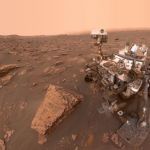
A group of scientists may have just pinpointed the location on Mars of a mysterious source of methane, a gas most often produced by microbes — and NASA’s Curiosity rover could be right on top of it.
Methane blips have pinged on Curiosity’s detection systems six times since the rover landed in Mars’ Gale crater in 2012, but scientists weren’t able to find a source for them. Now, with a new analysis, researchers may have traced the methane burps to their origin.
To calculate the unknown methane source, researchers at the California Institute of Technology modeled the methane gas particles by splitting them into discrete packets. Taking into account the wind speed and direction at the time of their detection, the team traced their parcels of methane back through time to their possible points of emission. By doing this for all of the different detection spikes, they were able to triangulate regions where the methane source is most likely located — with one being just a few dozen miles away from the rover.
Related: Voyager to Mars Rover: NASA’s 10 greatest innovations
“[The findings] point to an active emission region to the west and the southwest of the Curiosity rover on the northwestern crater floor,” the researchers wrote in their paper. “This may invoke a coincidence that we selected a landing site for Curiosity that is located next to an active methane emission site.”
This prospect is thrilling for scientists, as almost all of the methane in Earth’s atmosphere has biological origins, according to the researchers, so that a signature on Mars could be a key signpost for finding life on the ostensibly desolate planet.
Even if the methane is being produced by non-biological processes, it could point to geological activity closely tied to the presence of liquid water — a vital ingredient for past or present life to thrive.
Curiosity detected the methane blips through an instrument called the Tunable Laser Spectrometer, which is capable of detecting trace quantities of the gas at less than one-half part per billion (ppb), or about the quantity of a pinch of salt dropped into an Olympic-size swimming pool. The methane spikes that led the team to the potential source were registered at roughly 10 ppb.
RELATED CONTENT
—The 10 strangest places where life is found on Earth
—9 strange excuses for why we haven’t met aliens yet
—Greetings, Earthlings! 8 ways aliens could contact us
Previous attempts to cross-check Curiosity’s methane spikes with atmospheric methane levels detected by the European Space Agency’s Trace Gas Orbiter (TGO) have failed. This could either mean that there is methane in the Martian atmosphere and the TGO somehow isn’t picking it up, or there isn’t any atmospheric methane on Mars and Curiosity is parked right on top of a local source.
Though we still don’t know whether the methane comes from tiny life-forms, the detectable life span of methane is only 330 years, after this it is completely destroyed by exposure to sunlight. That means whatever produced the methane could be still producing it today. Scientists’ next job will be to find out what that something is.
The researchers published their findings June 3 on the preprint server Research Square, so their study has yet to be peer-reviewed.
Originally published on Live Science.
Join our Space Forums to keep talking space on the latest missions, night sky and more! And if you have a news tip, correction or comment, let us know at: community@space.com.
The post ‘Alien burp’ may have been detected on Mars by NASA’s Curiosity rover, , appeared first on NEWDAWN Blog.
Astronauts are growing chile peppers in space in spicy first, ,
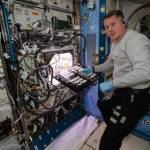
A batch of chile peppers seeds has been planted on the International Space Station as part of a new experiment that aims to expand the range of space-grown foods ahead of a possible future mission to Mars.
The 48 Hatch chile pepper seeds arrived at the orbital outpost June 5 with the SpaceX Dragon CRS-22 commercial resupply mission. Now, the red and green chile peppers are starting to grow as part of NASA’s Plant Habitat-04 experiment, the agency said in a Tuesday (July 13) statement.
Astronauts get most of their fresh food supplies from cargo ships, but earlier versions of the Habitat experiment already produced some tasty treats. During the previous three harvests, crews have enjoyed space-grown red lettuce, Mizuna mustard and two other lettuce types, and radishes. Astronauts have also grown flowering plants, such as zinnias, to spruce up their living quarters.
Current Expedition 65 astronaut Shane Kimbrough, who got to sample space-grown outredgeous red romaine lettuce during his 2016 mission, himself initiated this version of the Habitat experiment. Unfortunately, Kimbrough will likely be back on Earth by the time the chile peppers are ready in four months, as he and other SpaceX Crew-2 astronauts are expected to splash down in October.
Related: Abundant harvest in Antarctic greenhouse shows promise for moon agriculture
[image error]
NASA astronaut Shane Kimbrough inserts a device called a science carrier into the Advanced Plant Habitat (APH), which contains 48 Hatch chile pepper seeds NASA started growing on July 12, 2021 as part of the Plant Habitat-04 experiment. (Image credit: NASA)Nevertheless, the experiment team with NASA Kennedy Space Center’s exploration research and technology program paid tribute to the crew’s efforts to continue developing space food as part of a larger research effort to feed astronauts on deep space missions. Once on the moon or Mars, astronauts will not be able to rely on supplies from Earth and will have to grow more food locally. That’s where the Habitat research will fit in, its team stated.
“It is one of the most complex plant experiments on the station to date because of the long germination and growing times,” Matt Romeyn, principal investigator for Plant Habitat-04, said in the NASA statement. “We have previously tested flowering to increase the chance for a successful harvest because astronauts will have to pollinate the peppers to grow fruit.”
The experiment is hosted in the Advanced Plant Habitat, one of three plant chambers in which astronauts can grow and harvest food, flowers and other crops. Much of the maintenance work can be performed remotely by teams on the ground at Kennedy, reducing the hands-on time by busy astronauts in orbit.
Astronauts are known to get stuffy heads in microgravity, so spicy foods are often on the menu anyway to help encourage them to eat. This pepper variety, called the NuMex ‘Espanola Improved’ pepper (a hybrid Hatch pepper) naturally grows in zones such as New Mexico, NASA said. Researchers spent two years deciding among two dozen varieties before picking this one for a space ride, due to its potential for feeding astronauts on missions further away from Earth.
“We are limited to crops that don’t need storage, or extensive processing,” Romeyn said. All peppers also have the advantage of being dense in Vitamin C and other nutrients, providing good nutrition along with taste. Additionally, the colorful red – which will pop up late in the growing cycle – may benefit the astronauts’ mental health, based on past studies suggesting bright vegetables are a boon, Romeyn added.
The crew will sample some of the 48 peppers (that number assumes all the seeds planted make it to maturity), and send the rest back to Earth for further analysis. The science team will evaluate the flavor and texture of the peppers from crew feedback, along with Scoville measurements, which evaluates the plants’ “heat” or spiciness. That, the researchers said, can depend in part on the environment in which it was grown, so changing how much water, light and heat the plants get might actually affect how hot they will be.
“The combination of microgravity, light quality, temperature, and rootzone moisture will all affect flavor, so it will be interesting to find out how the fruit will grow, ripen, and taste,” LaShelle Spencer, Plant Habitat-04’s project science team lead, said in the same NASA statement.
“The food astronauts eat needs to be as good as the rest of their equipment,” Spencer added. “To successfully send people to Mars and bring them back to Earth, we will not only require the most nutritious foods, but the best-tasting ones as well.”
Follow Elizabeth Howell on Twitter @howellspace. Follow us on Twitter @Spacedotcom and on Facebook.
The post Astronauts are growing chile peppers in space in spicy first, , appeared first on NEWDAWN Blog.



